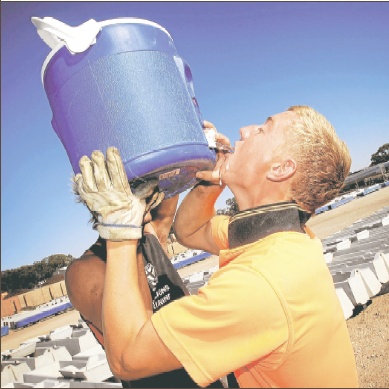Heat could kill NT work
 Outdoor labour may become impossible as Northern Australia faces a looming heat crisis.
Outdoor labour may become impossible as Northern Australia faces a looming heat crisis.
The Northern Territory experiences extreme heat and stifling humidity during the pre-monsoonal “build-up” from October to December.
Typically, the dry season provides relief from the heat, but this year, June saw unseasonable heat and humidity, with Darwin recording the second hottest June night in 83 years.
These conditions have forced hundreds of outdoor workers to take more breaks and consume more water, and some projects have been halted altogether due to the extreme heat.
The Bureau of Meteorology says that the weather conditions experienced in June could be indicative of future dry seasons as they continue to warm up.
This worrying trend has prompted organisations across the Territory to implement heat mitigators, such as providing adequate breaks, rotating crews, and having air-conditioned rooms on-site for workers to seek relief.
Research indicates that future climate conditions may reduce safe work durations in northern Australia by 20 to 50 per cent. The wet season is predicted to become shorter and warmer, exacerbating the challenges faced by workers.
To adapt, experts say work schedules may need to shift to night shifts or earlier start times, and there will be a greater emphasis on using heat-releasing workwear and providing access to cold facilities.
Heat plans, similar to cyclone plans, may become the norm to ensure the safety and productivity of workers in the face of rising temperatures.







 Print
Print